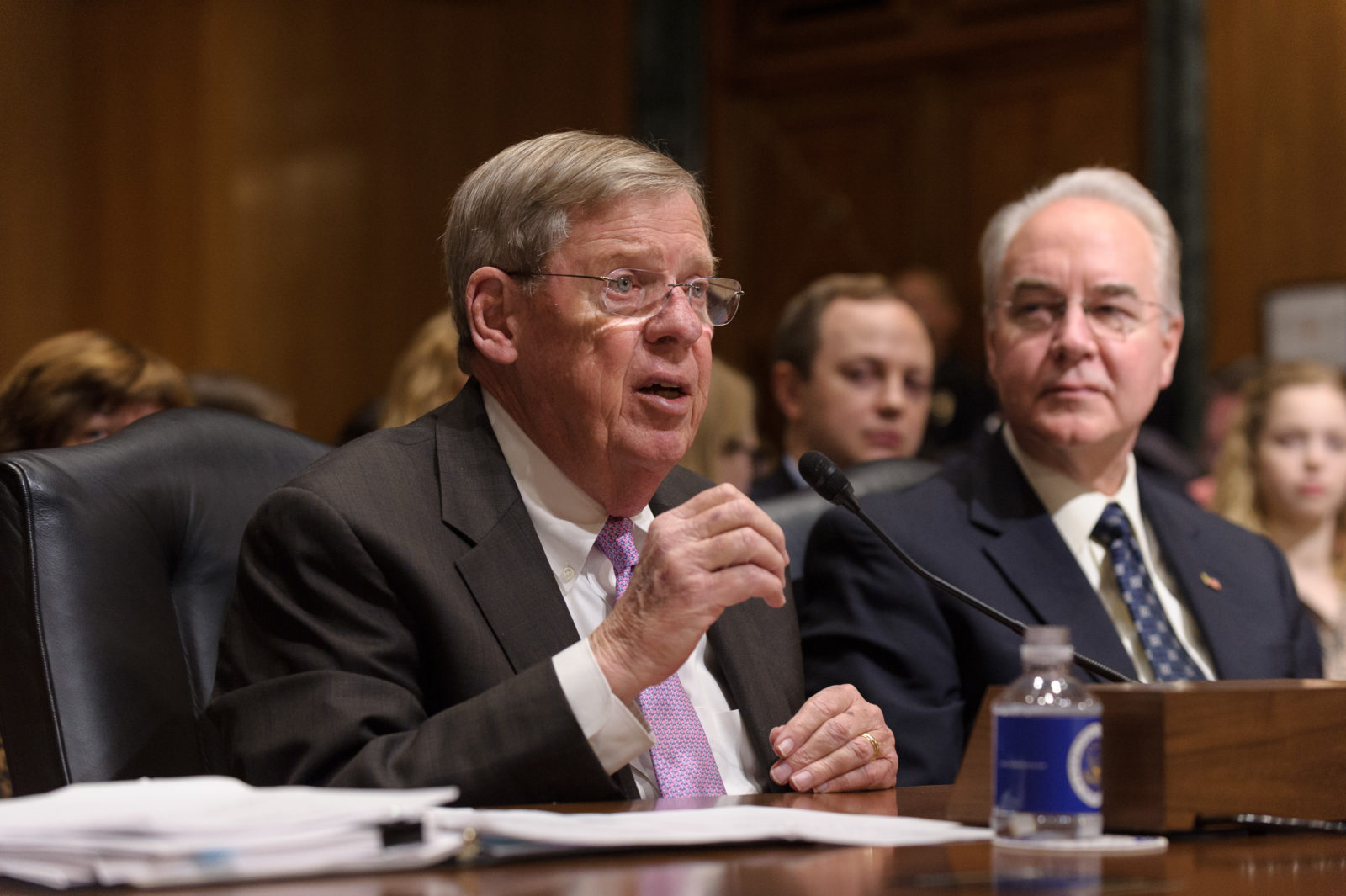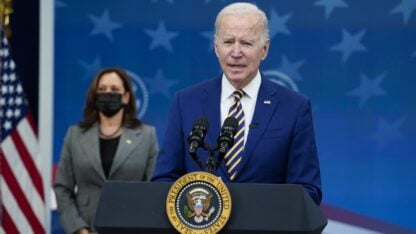A Republican senator from Georgia has introduced a bill to study what he calls “mass violence.” It would give a $300 million infusion to the Centers for Disease Control and Prevention (CDC).
U.S. Sen. Johnny Isakson’s plan is to spend $75 million annually, for four years, to study the causes of what he calls “mass violence” and how to prevent it.
“Even as overall crime rates have gone down in recent years, we’ve seen an alarming increase in seemingly random mass violence,”said Isakson in a press release. “Americans are right to demand action from their elected leaders, and I’m tired of seeing Congress respond with partisan politics instead of real solutions.”
Senate Republicans had previously sought to omit lines in the federal budget that proposed $25 million each to the CDC and National Institutes of Health (NIH) specifically for gun violence research.
The language in Isakson’s bill is careful to note that firearms are only one tool through which “mass violence” is carried out. It defines mass violence as a “…physical assault carried out with implements (which may include knives, clubs, motor vehicles, firearms, or explosives) resulting in injury or death to three or more victims, not including the perpetrator. Such term does not include identifiably gang, drug, or organized crime-related incidents.”
Mark Rosenberg is a former head of the CDC’s injury prevention center and an advocate for research funding on gun violence.
“This is a big vote of confidence in not only CDC, but the whole public health approach that says we can, through research and discovery, learn how to do much better, both at preventing violence and protecting the rights of law abiding citizens,” said Rosenberg. “That’s a tremendously important statement and recognition.”
Isakson’s announcement comes as congressional momentum on gun regulation appears to have slowed amid an official presidential impeachment inquiry. But Rosenberg is hopeful this new bill signals a willingness to break with the decades-old idea that funding research on violence will ultimately result in gun confiscation.
“This is trying to get away from the partisanship that has kept us so stuck in this deadly morass and I give Sen. Isakson a lot of credit for that,” said Rosenberg.
He agrees that it’s appropriate to study mass violence as a whole, and believes there has been a marked increase in the frequency of mass shootings in particular.
“How high the increase is depends on how you define it,” said Rosenberg. The latest CDC data shows active shooter incidents represent less than 2% of annual gun deaths, compared with suicides (about 60%) and homicides (about 30%).
“There are certain common risk factors that we can start to study and identify people who are at risk of committing mass violence or mass shootings,” said Rosenberg, pointing to work some researchers have tried to compile on active shooters.
“The problem is that the research is a trickle. Without government funding at the level that the government can fund and support, the research goes slowly. And while the research goes slowly, people get killed in increasing numbers,” said Rosenberg.
Seventy-five million dollars annually will make a difference, he believes, attracting more researchers to the field of study as well as increasing the pace of useful findings.
“To give you a comparison, to save lives from motor vehicle crash deaths in the 1960s when there was an epidemic of young people being killed on the highways, the federal government started putting $200 million a year into research,” said Rosenberg, who says funding at that level over 50 years has saved hundreds of thousands of lives.
A 2017 study found gun violence research funding received about 0.7% of the funding sepsis does, a condition that kills about as many people. That disparity is often associated with the 1996 passage of the Dickey Amendment, which prevented the CDC from using federal funding to advocate for gun control. Rosenberg himself was fired from his role at the CDC around that time.
“What the Dickey Amendment was then was a barrier to research, because it was used as a threat to researchers,”said Rosenberg. “But what it can be used for now is a bridge to this bipartisan coalition, because what it can say to people concerned with gun rights is: you’re not funding gun control.”
He believes the amendment may now serve as a protection against claims of biased anti-gun research, a prospect bolstered by the fact that this funding bill is being introduced by a Republican senator with two committee chairmanships and a strong record on Second Amendment rights.
Isakson is set to retire from the U.S. Senate in December, because of health reasons.
Guns & America is a public media reporting project on the role of guns in American life.

9(MDAxODM0MDY4MDEyMTY4NDA3MzI3YjkzMw004))








